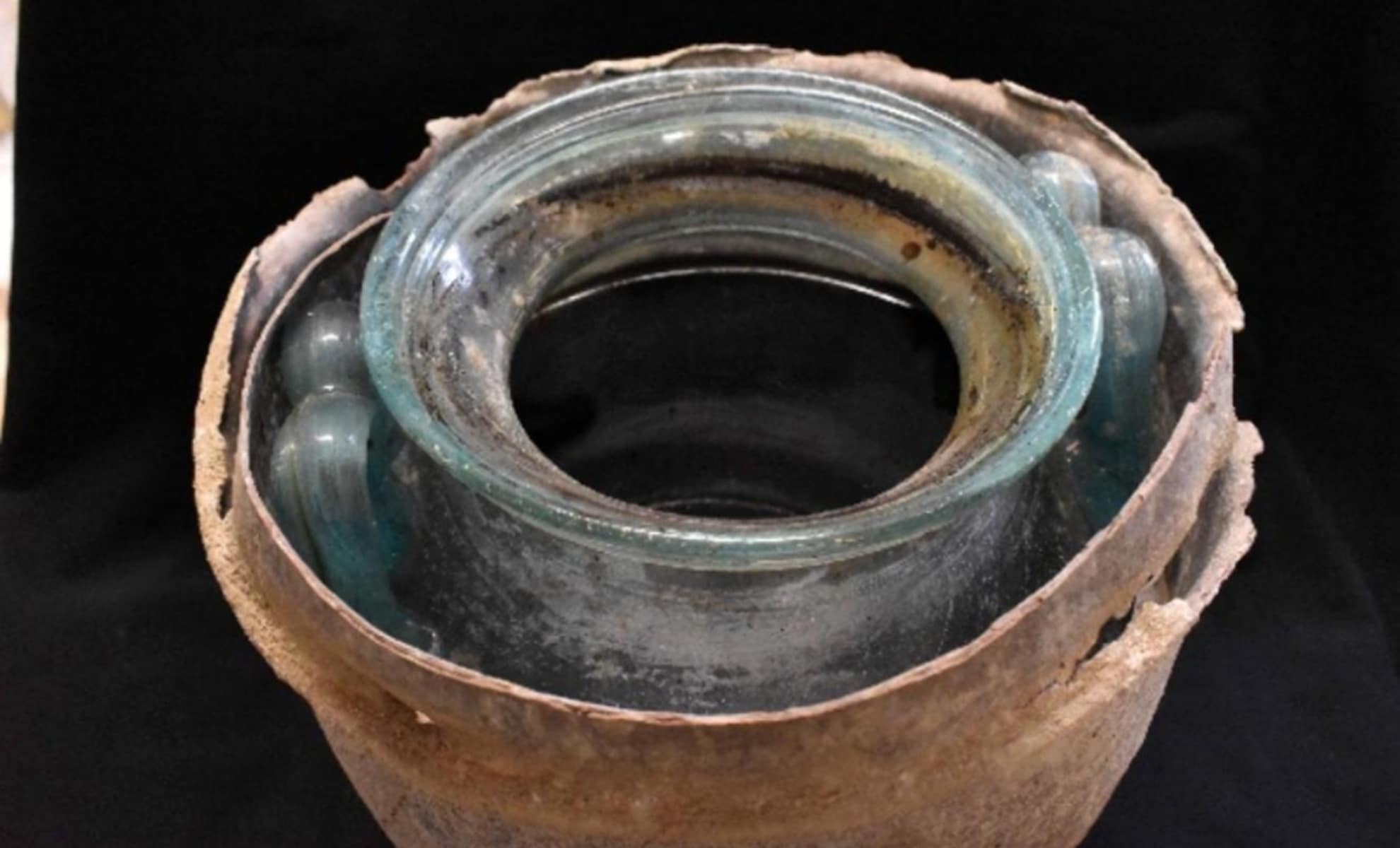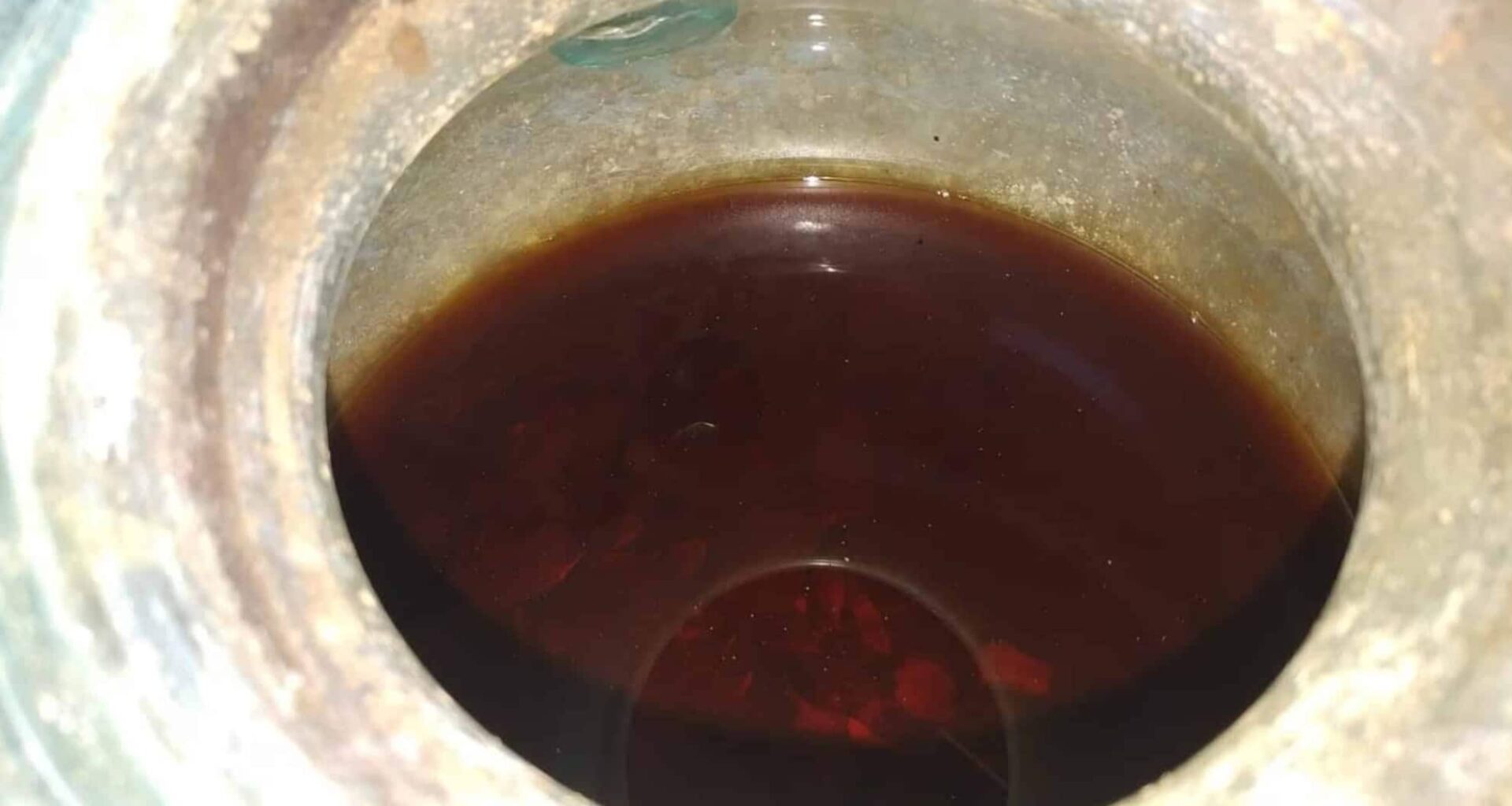Spanish archaeologists have discovered the oldest known wine preserved in liquid form, dating back nearly 2,000 years. The wine, found inside a sealed Roman funerary urn in the city of Carmona, southern Spain, was identified as a white wine that changed color over time.
This exceptional find was made inside a fully sealed Roman mausoleum, where six urns containing cremated remains were uncovered. One of the urns, remarkably intact, held a reddish liquid that chemical analysis confirmed to be wine—making it the earliest known liquid wine ever recovered.
The urn was part of a first-century Roman tomb discovered in 2019. It contained the cremated remains of a man, along with a gold ring, submerged in approximately 4.5 liters of wine. The liquid’s survival was made possible by the airtight conditions of the tomb, which had remained sealed since antiquity. This level of preservation ruled out contamination from external elements like groundwater, condensation, or leakage. The site, previously part of the Roman province of Baetica, was well known for its wine production.
A Chemically Verified 2,000-Year-Old Vintage
The team from the University of Cordoba used a series of advanced analytical techniques to determine the liquid’s composition. High-performance liquid chromatography-mass spectrometry (HPLC-MS) detected seven types of polyphenols, including quercetin and apigenin, which are commonly found in wine. According to ZME Science, the absence of syringic acid—a marker typically present in red wines—indicated that the original wine was white, although it had turned reddish due to chemical changes over the centuries.
Mineral content analysis also aligned the wine with modern white wines from the Montilla-Moriles region, which lies within the same geographical area as the ancient Roman province. The researchers noted that comparisons with other Roman-era wines, such as the Speyer bottle from 4th-century Germany, highlighted the uniqueness of this discovery: it is the only Roman wine ever found in liquid form.

The Urn In Which The Wine Was Found © Juan Manuel Roman/ Journal of Archaeological Science
Wine’s Cultural Role in Roman Funerary Rites
In Roman culture, wine held both social and spiritual value. It was a symbolic offering commonly placed in tombs to accompany the deceased into the afterlife. According to archaeologist Juan Manuel Román, quoted in the source, the presence of wine alongside cremated remains confirms the ritual importance attributed to wine during Roman burial practices.
This funerary urn was not the only one containing symbolic items. Another urn housed the remains of a woman, along with amber jewelry, a perfume vessel containing patchouli oil, and fabric, likely silk. These details illustrate the gendered customs and burial privileges of the time, with men and women receiving distinct funerary treatments based on status and role in society.
Roman Wine Culture and Gender Divisions
The discovery also sheds light on gender dynamics in ancient Roman wine culture. While wine was a daily staple across all Roman social classes, it was primarily associated with male consumption. Women, especially in upper-class households, were often prohibited from drinking wine and excluded from certain religious rituals. As noted in the media, a husband could even divorce or kill his wife for drinking wine, under Roman law.
Nevertheless, archaeological records suggest women may have consumed certain types of wine, like passum, a sweet raisin wine considered more socially acceptable. The inclusion of wine in the male urn, as opposed to the female ones, reflects these ancient cultural norms and offers a historical snapshot of Roman social structures.
